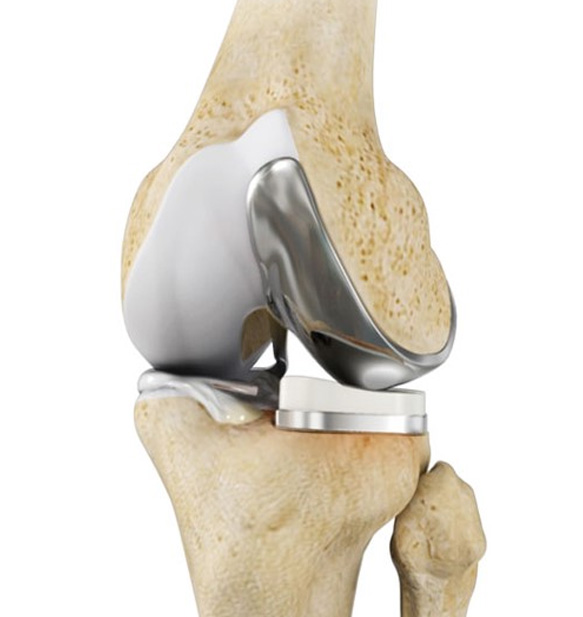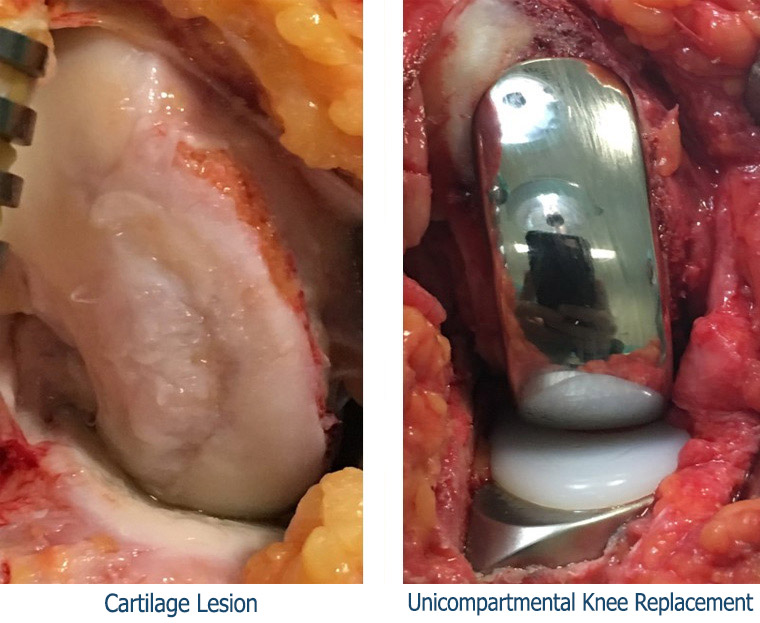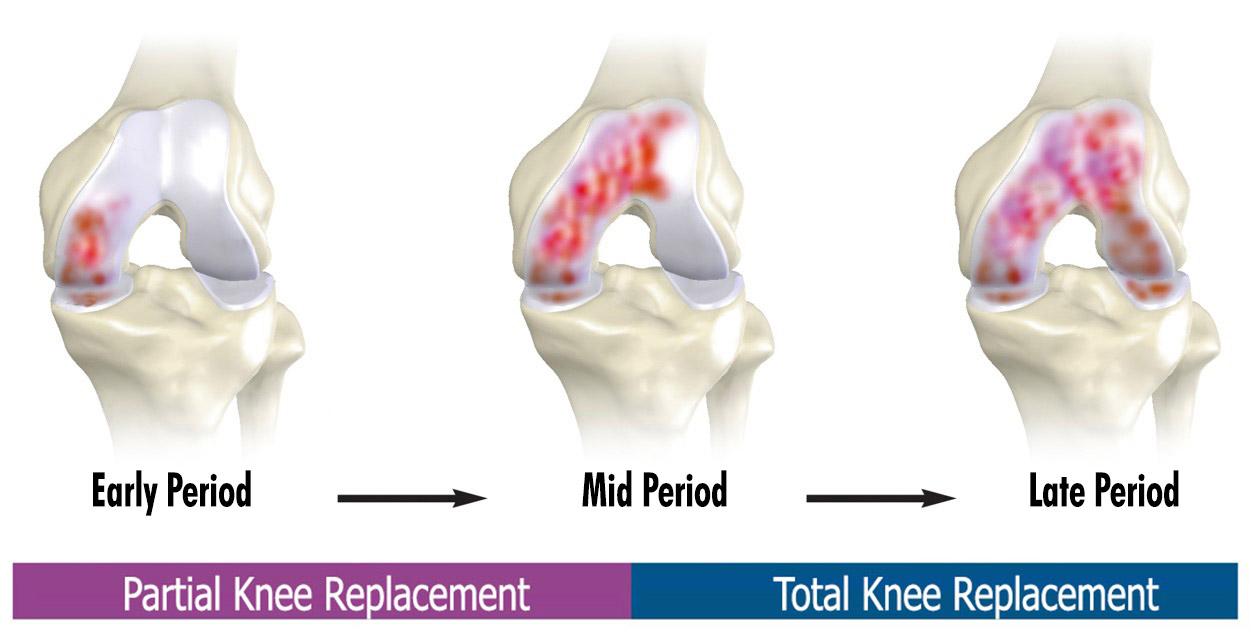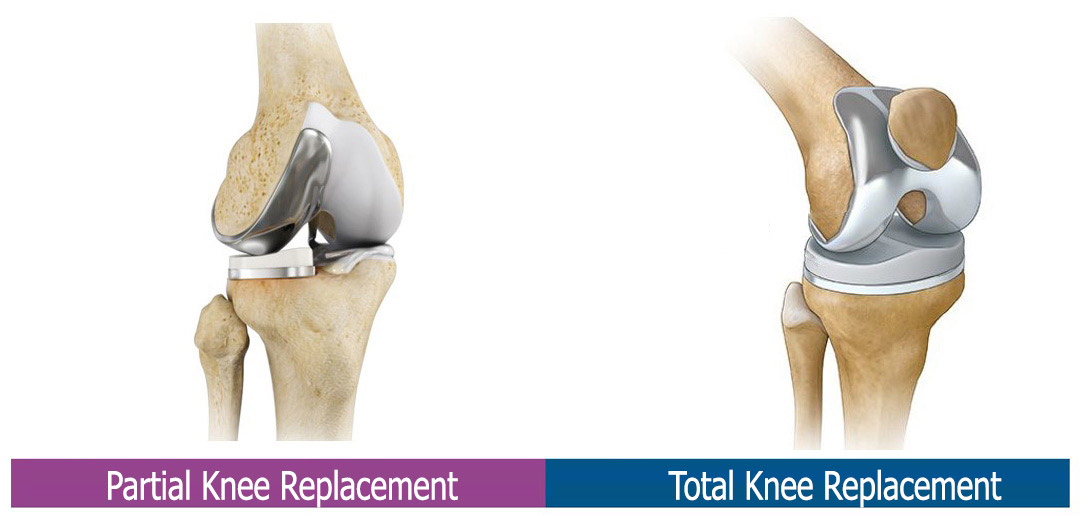Why does a part of knee wears?
In the early period of knee wear (calcification), only a portion of the knee may be worn, but in the case of deformity of the legs, only the inner or outer half of the joint may be worn. Generally, in our society, due to the distortion of the legs (O-leg shape) is more frequent, we see more frequent erosion of the inner knee. Rarely, we see patients with X-leg shape, and in this case the outer half also wears earlier.
What is the difference between partial knee prosthesis and total knee prosthesis?
In partial knee replacement surgery, unlike total knee surgery, only the worn part of the knee is intervened, and the other half and middle placed cross-ligaments are not intervened.
Whom is applied the partial knee replacement?
Early period of joint wear, so patients aged 50-60, or older patients with only the internal part of the joint worn, are suitable candidates for partial knee replacement.
If the operation is delayed further on the knee which have partial erosion with leg deformity, due to healthy part of the knee will be weared quickly; partial prothesis chance will be eliminated. These patients require total prosthesis surgery.
How long is the life of a partial knee replacement?
Today, thanks to the development of modern designs and good surgical technique, the 10-year survival of the partial knee prosthesis has reached 90%. Surgical technique’s goodness is very important for long survival. Because the mistakes in the partial knee prosthesis are not tolerated by the knee, due to the other half of the knee is intact. In our day, robotic systems has been developed to eliminate this problem as well.
How to decide on a partial knee replacement?
Patients who come to consultation with knee calcification (arthrosis) are evaluated by inspection and X-Ray. If necessary, your physician may request MRI or X-Ray at different positions to understand that the other part of the knee is normal. However, the final decision is made in surgery. The decision is finalized by seeing the remaining part of the knee from the incision made for the partial knee prosthesis. During surgery, it is rarely seen that the other part of the knee is damaged as well, then cut is lengthened by 2 cm and total knee prosthesis can be started.
When do I get up after a knee replacement?
Patients can stand up one day after surgery and walk at full load. They can take short walks with a hand support.
When do I get up after a knee replacement?
Patients can stand up one day after surgery and walk at full load. They can take short walks with a hand support.
When will I be discharged from the hospital after a partial knee replacement?
As average after 3 days, patients are discharged to home.




